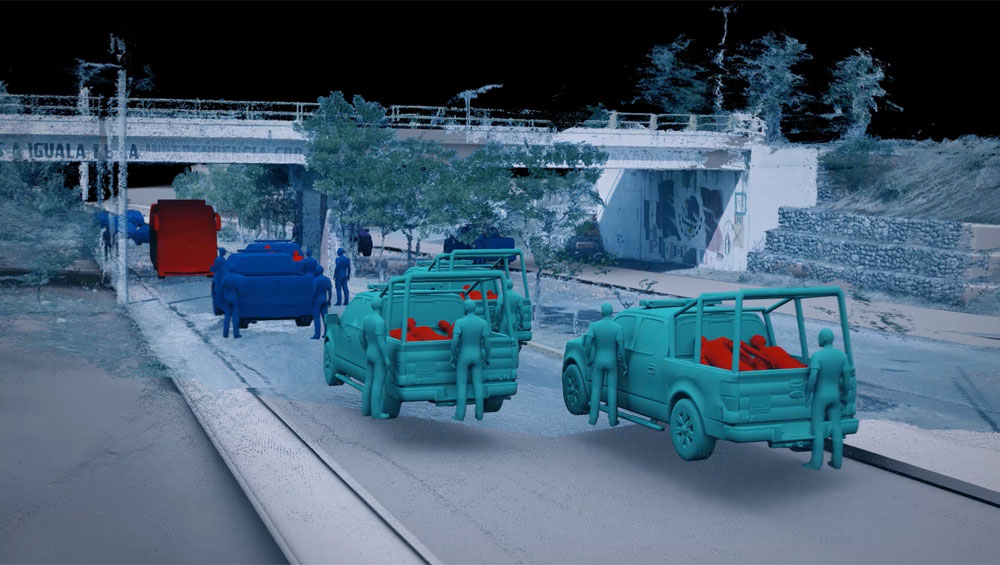
The Enforced Disappearance of the 43 Ayotzinapa Students Iguala, Mexico, 26-27 September 2014. At the Palacio de Justicia, between 12 and 14 students (red) were beaten up and loaded into the back of multiple police vehicles (turquoise). Image: Forensic Architecture, 2017.
by VERONICA SIMPSON
Forensic Architecture (FA) is an architectural detective agency, based within the Centre for Research Architecture at Goldsmiths, University of London. This multidisciplinary agency – combining architects, film-makers, artists, journalists, lawyers and scientists – uses its expertise to reveal the ways in which citizens’ human rights are being abused or neglected by law enforcement, the military and governments.
Founded in 2011 by Israeli-born British architect Eyal Weizman, its various investigations – in the form of sculptural installations, photographs or films - have become a regular highlight of architecture and art festivals, from the Venice Architecture Biennale 2016 to Documenta 2017. Earlier this year, the Institute of Contemporary Arts in London hosted the agency’s first solo survey show, revealing the scope, scale and inventiveness of its practice. Exhibits included its 2013-16 investigation confirming a drone strike (possibly by the CIA) in Miranshah, Pakistan, in 2012, through painstaking analysis of the blast from video stills; and its continuing work with Forensic Oceanography into the covert and overt militarised border regimes imposed by Europe across the Mediterranean, which have led to the death of many migrants in the region over the past 30 years. Also, early in 2018, the agency made headlines for winning the European Cultural Foundation Award (which celebrates organisations using culture for good) as well as a nomination for the UK’s ultimate art gong, the Turner Prize.
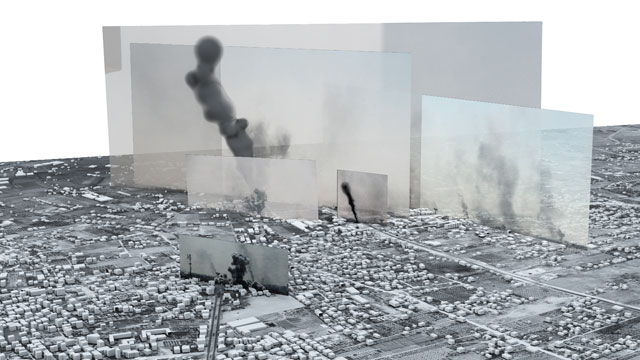
The Bombing of Rafah, Gaza, Palestine, 1 August 2014. Forensic Architecture located photographs and videos within a 3D model to tell the story of one of the heaviest days of bombardment in the 2014 Israel-Gaza war. The Image-Complex, Rafah: Black Friday, Forensic Architecture, 2015.

The Bombing of Rafah, Gaza, Palestine, 1 August 2014. The Image-Complex. The story of Rafah, Gaza on 1 August 2014 lies somewhere between hundreds of images and video clips existing in disparate locations, on the smartphones of activists, press clippings, and social media posts. 3D models provided an optical device and a means of composing the relation between multiple images and videos in space and time. This evidence-assemblage is what allowed for a narrative of events to emerge. Image: Forensic Architecture, 2015.
Weizman first made headlines for his uncompromising blend of architecture and ethics in 2002, when he had moved back to Tel Aviv after qualifying at the Architectural Association in London. Having been invited to Berlin as part of an exhibition promoting young Israeli architects, he decided to show his PhD on the way in which Israeli town planning is used in occupied territories to divide and suppress - a move that prompted the Israel Association of United Architects to cancel the exhibition and destroy the catalogues. Nevertheless, he managed to insert the same work into Israel’s pavilion at that year’s Venice Architecture Biennale. Commissions and support – the latter from Goldsmiths’ Centre for Research Architecture, in particular - followed, with the targets quickly shifting from planning abuses to global issues of warfare and displacement.
With a talent for picking the political hot potatoes of the day, Forensic Architecture’s current projects include the creation of a 3D video map, a media archive and a spatial database of the fire at Grenfell Tower, one of London’s social housing blocks, that occurred in June 2017, killing 72 people. Its research should to help to identify both the degree to which the fire was caused by shoddy materials and workmanship and the flawed decisions by the local council and its contractors that led to the tragedy. FA’s stated objective is to be “on the side of civil society”, and it will not work with governments or corporations, but seeks partnerships with organisations such as Amnesty International, with which it is attempting to reconstruct the abuses perpetrated at Saydnaya, a Syrian prison, using architectural and acoustic modelling based on survivor testimonies. Much of its funding comes from European research bodies – and is under threat because of the UK’s proposal to leave the EU.

Torture in Saydnaya Prison, Saydnaya, Syria, 2011 - ongoing. A detainee works with Forensic Architecture researchers to recreate elements of the prison in April 2016. Image: Forensic Architecture, 2016
Weizman, together with deputy director Christina Varvia, has recently installed the ever-expanding team in a new, more spacious office at Goldsmiths’ campus in south London. Here, Studio spoke to projects coordinator Samaneh Moafi about the role of aesthetics in FA’s investigations, the reaction to the Turner prize nomination, and the ways in which pushing the boundaries of research underpins and fuels the organisation’s work.
Veronica Simpson: How did you come across this radical, activist and collaborative approach to architectural practice?
Samaneh Moafi: I did my batchelor and master’s in architecture in Australia. During our master’s degree, Eyal came to our university to do a workshop. That was the first time that I engaged with Eyal’s work. At that time, FA was not really acting as a research agency as it is now. It was more of a theoretical thing – it was a group of PhD students working on cases on a long-term basis; ideas were developing at that stage. I became interested in FA at that point and did a project with them – long distance, as I was still in Australia. Then I moved to the UK and was doing projects with them off and on for some time. About two years ago, I started working regularly on a part-time basis, because I was also doing my PhD. I finished my studies in January and so am now working here full time.
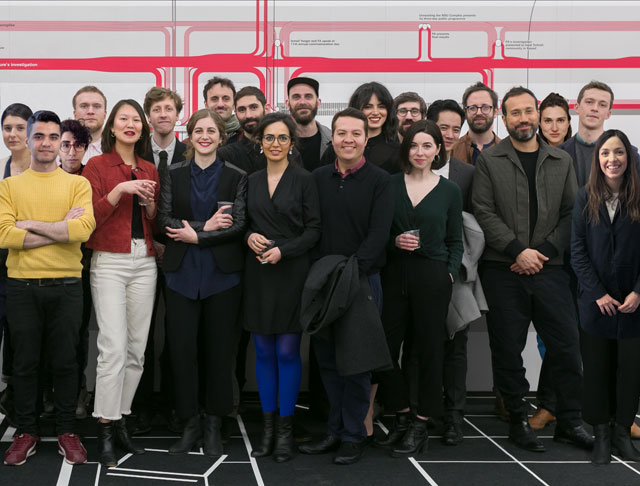
Forensic Architecture, group photograph.
VS: There is no other organisation quite like it in the world of art or architecture that I have come across, but is this such an unusual field of research in the world of academia, outside MIT?
SM: I don’t know another research agency that is doing the same kind of work as us. But forensic architecture is not something we invented. Forensic architects have been around for a long time, doing surveys after an earthquake, after buildings fall over, so they can produce architectural evidence in court to say what happened. It’s niche, but it’s a known discipline. What we are trying to do is to expand this discipline. We depart from that niche and try to look at crimes that are happening on a larger scale. We are producing evidence that is architectural, and we aim to bring it to different forums, judicially and so on.
VS: So, expanding the understanding of how architecture, through collaboration with other disciplines, can contribute to research and expand our understanding of the physical and political world is one of your main drivers. Certainly, it is that edgeland that you explore, of innovation through multidisciplinary practice – as well as the subject matter - that causes excitement within art and architectural settings when your work is exhibited.
SM: Yes, and it’s great that we are within Goldsmiths, because it’s such a rich base to have. Depending on the project, we bring different experts from within the university over, but also it allows us to invite academics from all over the world for talks or for engagement with us, or workshops. That is fascinating. And, yes, we are producing evidence that is going to court, but we are also developing theoretically what this thing is, and what it means for the profession, for us today. The New York Times is starting a section that is doing something similar to our work, and we are collaborating with it now. There was a case of shootings in a hotel in the US earlier this year and it carried out a small investigation, and now we are collaborating with it on a project. But the background it comes from is journalism, so the way it approaches things is a little bit different from the way we will be approaching things.
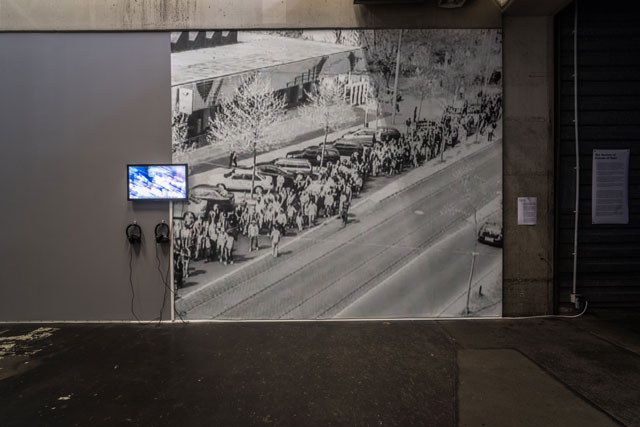
Documenta 14, Forensic Architecture. ©_Mathias Voelzke
VS: What impact does it have when others view your investigations as a work of art - when you are being invited to these major global art events, such as the Venice Biennale or Documenta? At what point was this work seen as having the potential to become an artwork or provocation?
SM: That’s an interesting question. I don’t think there was a point. I think, as architects, the first thing we learn is how to render something, how to draw in a particular way, so that somebody can interpret and build it; how to make people imagine the space in a particular way. We are dealing with aesthetics, which is the core of our practice, from the very beginning.
Our sister organisation, the Centre for Research Architecture (at Goldsmiths), is led by Dr Susan Schuppli, who is an artist. So, we’ve been working with artists from the very beginning of the idea of FA. And the field for art is aesthetics. I always try to think about it in a sense that anaesthetics is when you don’t feel. So, aesthetics is about feeling the environment in a particular way.
VS: Talk me through the way in which you might feel your way into an investigation, and the tools that you use.
SM: We begin with images. That’s what we investigate. The majority of our projects are places we don’t have access to. The materials we can look at are the videos leaking out (on social media) or satellite images or photos. We begin with that and we tear it apart and pull out anything we can take out of this one image or frame of a film. It begins with that. It’s about how we interrogate a piece of evidence or find something that could be a piece of evidence. The way that we interrogate it is very much through the tools that you use for composing a film or designing a building. We use software such as Rhino and 3ds Max and rendering software. And when we’re working with video and images, we’re looking at Adobe Premiere, the film-making software. This is software created for designers to compose something new. We are doing something in reverse. We are taking something that is already composed and pulling it apart, deconstructing it. Our equipment, our methods are the same as, I would say, someone who would consider themselves an artist with a capital A, but we are using it for a different purpose.
VS: Was it a big surprise, then, to be nominated for this huge art prize, the Turner?
SM: The Turner was a big shock. We had never even considered such a thing. Whereas we had tried to work with the ICA on certain cases [shown in the 2018 exhibition, Counter Investigations] and we had tried to engage with these forums in the past, we felt, and it’s been our concern: how can we use these forums and push them somewhere else? We deal with different kinds of forums – the court is one, social media and the art forum is another.
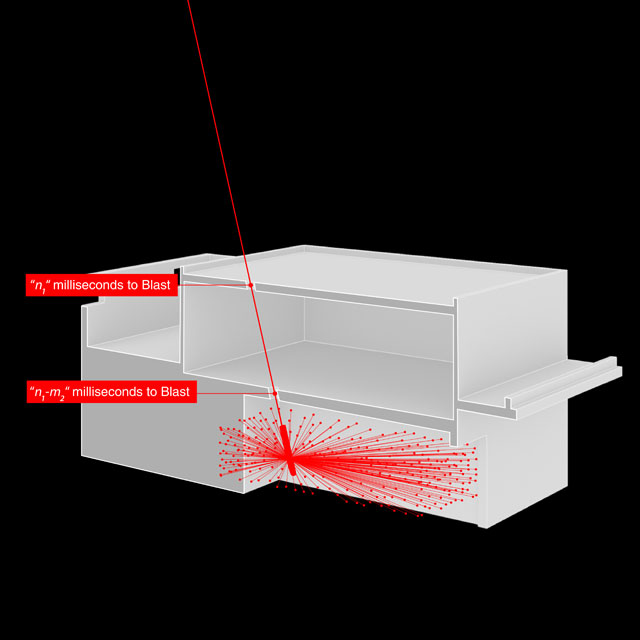
Drone Strike in Miranshah, North Waziristan, Pakistan, 30 March 2012. The delayed fuse missile was designed to penetrate through roofs, floors and walls before detonating deep within the building. Image: Forensic Architecture, 2016.
The question of forums is central to our practice. How do you bring a piece of evidence to a forum and how do you organise the people around it who will then discuss it? We were quite excited about the work we were doing with the ICA because it’s the beginning of a three-year project, and it was the first time we had tried to accompany the exhibition and the work that we were showing with an FA academy thing on the side, where we could discuss our techniques and show them and really try to open up the practice and encourage people to take it up.
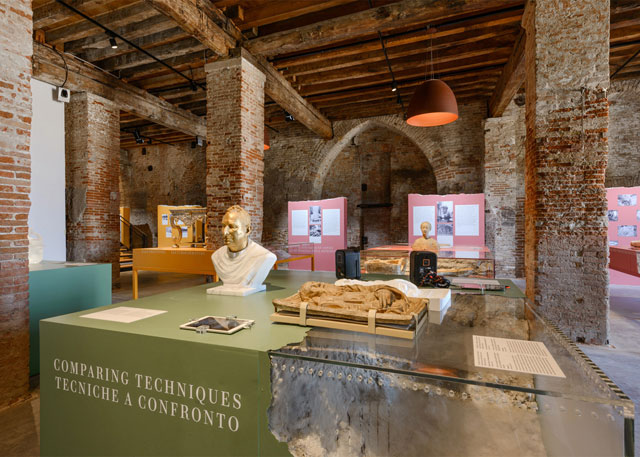
A World of Fragile Parts, Victoria and Albert Museum exhibition, Venice Architecture Biennale, 2016. Photograph courtesy Dezeen.
I guess the work we did for the Venice Architecture Biennale last time was quite interesting. When Aravena [Alejandro Aravena, the 2016 curator] approached us, he said: “You talk about all these kinds of forums but I want you to use this space purely for taking one of your investigations further, as a laboratory.” We were quite excited, we were considering a few things, so that was the moment that we thought, OK, we have this video of Miranshah, and we have been analysing it in 3D and simulating it. But what if we build it, test it out, in a one-on-one model of this space? It was very much a laboratory technique: how do we set up this space to run that experiment and then prove the analysis we have done on computer through that? It was a double proof, in a way; that was such an interesting thing to do. It wasn’t like an art piece that is one of a kind: it was set up as a laboratory experiment, from architectural drawings, stage by stage.
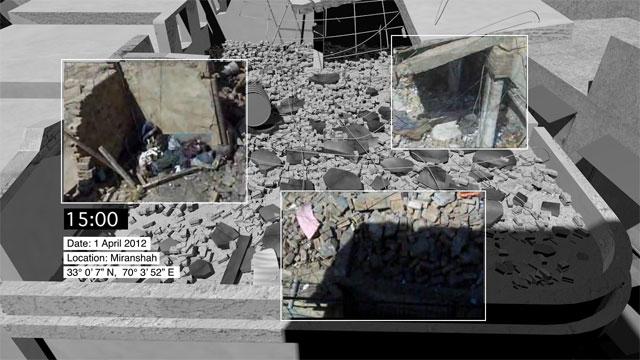
Drone Strike in Miranshah, North Waziristan, Pakistan, 30 March 2012. A composite image merges news footage of a home destroyed in a drone strike on Miranshah, North Waziristan, Pakistan together with Forensic Architecture’s 3D modelling. Shadow analysis was used to corroborate the approximate time (15:00) the video was shot. Image: Forensic Architecture, 2016.
VS: What do you think you will do for the Turner Prize exhibition?
SM: It’s a million-dollar question. We’re just trying to get used to the idea of what it means. But we are quite excited, because it’s a platform, an opportunity to take the work further, so it’s an opportunity to do a different investigation. But, also, being a research office based in the UK, and having a platform in the UK to talk about human rights and state violence, what kind of project do we bring in, from what context? Is it a collection of projects, or is it one? These are the kinds of conversations we’re having.
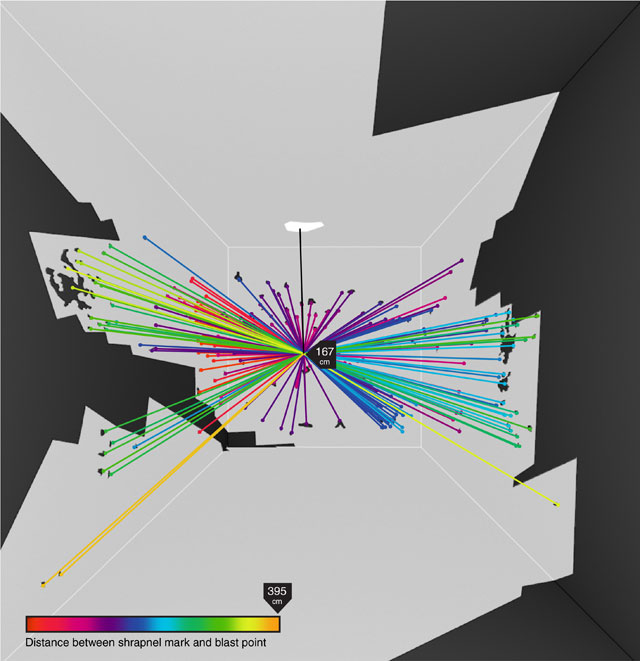
Drone Strike in Miranshah, North Waziristan, Pakistan, 30 March 2012. Colour-coded diagram showing the distance from the blast point to where shrapnel marked the wall. By analysing the directionality of the shrapnel marks, Forensic Architecture determined the location where the missile detonated in the room. Image: Forensic Architecture, 2016.
VS: When (the architecture collective) Assemble was nominated in 2015, there was a certain amount of backlash, both from the art world and the architectural profession, some of whom saw it as a critique of their own practice. Have there been any negatives so far?
SM: The day after the prize was announced, there were these misreadings of who we are in social media. People were calling us a collective and we are not a collective: we are a research agency. These terms are important and they affect other investigations we are running right now. We work with lawyers and these terms have a legal status behind them.
VS: So, in the legal world, to say you are a collective implies a political position?
SM: Yes, to some extent. We try not to take sides. We are clear about the merit that we’re for human rights and any investigation we do is for human rights. But, yes, it’s like a different legal status. Our major funding is coming from the EU, especially the European Research Council, and the reason we get that grant is because we promised we would be developing investigative techniques and every project we take on is about how can we push the techniques that we have towards something new, and it’s different from the way a collective would be organised. They would have a different kind of agenda.
VS: But has there been any backlash from the art or architectural worlds?
SM: We had critiques, such as: “If you are architects, none of you are RIBA- [Royal Institute of British Architects) registered. This kind of marking of disciplinary borders is something we couldn’t care less about. We love this idea that we are a multidisciplinary organisation. We don’t want these boundaries. We have always been clear that architecture is something we depart from. It’s our base, but it’s only a base. And I consider myself as someone who has worked in the field of architecture and continue to do so. From the art world, there was less negativity, perhaps, but questions like: “Are you really artists?” More of this disciplinary labelling.
But our friends are standing behind us on it and with us. But then, also, there is this other kind of critique: “Are you taking violence that is imposed on people and turning it into art? And what does that mean?” So, there is a human rights critique that we’re receiving, too. But this is who we are, so we just continue what we’re doing.
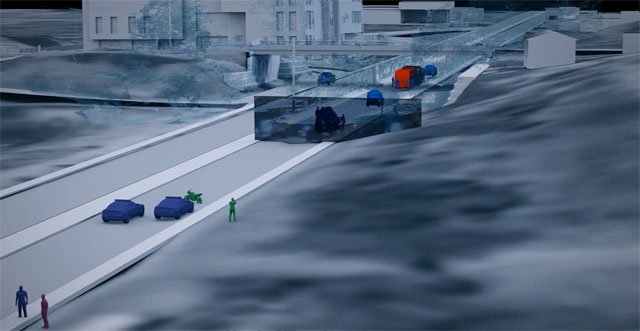
The Enforced Disappearance of the 43 Ayotzinapa Students
Iguala, Mexico, 26-27 September 2014. Through 3D modelling, Forensic Architecture reconstructed the attack at the Iguala Palacio de Justicia. Two buses transporting the students were attacked multiple times by different state security forces. Image: Forensic Architecture, 2017.
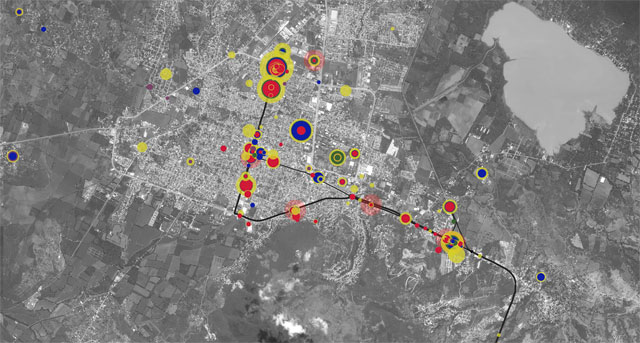
The Enforced Disappearance of the 43 Ayotzinapa Students
Iguala, Mexico, 26-27 September 2014. The Ayotzinapa Platform enables users to explore the relationship between thousands of events and hundreds of actors from the night of 26-27 September 2014. Image: Forensic Architecture, 2017.
The fantastic thing is, we can use the (nomination/prize) money for another investigation. The way we fund our projects, there are different models. Some of them are commissions, say by Amnesty, and we try in these commissions to share the cost 50:50, so that means we have control over the outcome of the collaboration as well. But then there are some of them that we just have to put a lot of our own funding into, such as the investigation we had on Mexico. [In September 2014, a group of students and activists from Ayotzinapa were attacked by local police, with six people murdered, 40 wounded and 43 students forcibly disappeared; FA’s analysis of thousands of reports, videos and phone-logs revealed collusion and coordination between the state and organised crime.] We were working with lawyers of the disappeared students. They had initial funding but it was nowhere near enough for the year-long project that we did. Any one of these grants or awards that come in just helps the case, the new investigations.
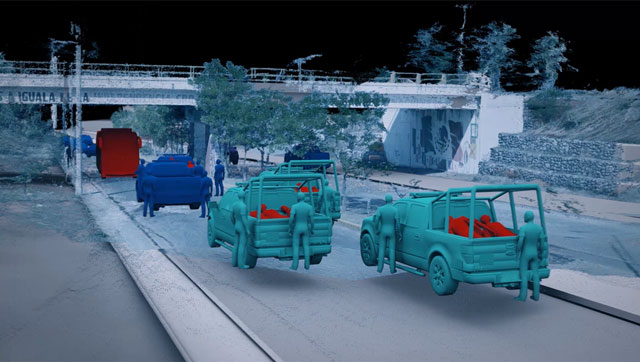
The Enforced Disappearance of the 43 Ayotzinapa Students
Iguala, Mexico, 26-27 September 2014. At the Palacio de Justicia, between 12 and 14 students (red) were beaten up and loaded into the back of multiple police vehicles (turquoise). Image: Forensic Architecture, 2017.
VS: Do you have to agree as a group which projects and investigations are prioritised?
SM: Yes, to some extent. How the structure works is that Christina [deputy director Christina Varvia] is the office research coordinator, who oversees most of the projects happening in the office. We have three project coordinators, and each of us is specialised in a particular field. I work with environmental change. And Stefan [Laxness] works with drone strikes. [The third project coordinator is Ariel Caine, whose skills focus on computational photographic and photogrammetric processes and imaging technologies.] But if I have a speciality that is useful for another team, I would do something for them; there is crossover. Our coder is always working with whoever needs coding and our film-maker works with whatever films are needed. We have people who are constantly moving across projects and some people always more or less focused on one thing. No projects are done by one person on his or her own. We work together, but we try to do these monthly, morning meetings, where we bring everyone up to date with what we’ve done. We spend a lot of time with each other. It’s a family, really.
VS: Given your dependence on grants, how vulnerable would your work be if the UK leaves the EU?
SM: We’re worried about that. If we weren’t part of the EU, we would probably would not have got the prize we got two days ago [£25,000 from the European Cultural Foundation Award]. The majority of our funders are EU-based and not British.
VS: Would it be enough to cause you to relocate?
SM: We have considered that. We all come from different backgrounds: we have Greeks, Spanish, Italians, Swiss, Canadians and I’m Iranian; it’s a real mix. I guess what’s keeping us here is this work, the office, the connections with the university, but if we can’t do the work we want to do, then Berlin is quite close. Athens has good weather. And it’s cheaper, I would say.